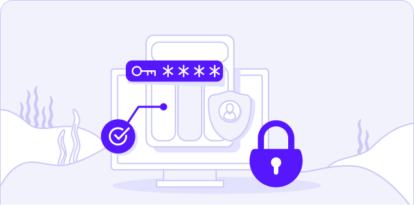Threat Exposure Management: The Future of Cybersecurity

This is the fifth blog in a five-part series from TAG. Click here for the first blog, Introduction to Threat Exposure Management and its Outcomes.
The cybersecurity landscape is continuously evolving, marked by an ever-expanding array of threats and challenges. Organizations, both large and small, find themselves grappling with the dynamic nature of cyber threats. From ransomware to supply chain compromises, threat actors are rapidly innovating new ways to exploit vulnerabilities for financial and strategic gain.
In this fluid threat environment, organizations cannot rely on static defenses. Organization’s need to adopt a proactive and adaptive approach to cybersecurity. This is where threat exposure management comes in. Exposure management provides the capability to continuously monitor assets, identify vulnerabilities, quantify risks, and prioritize remediation.
Emerging Threats and CTEM
The cyber threat landscape is experiencing an exponential increase in complexity and sophistication of attacks. While foundational threats like phishing remain prevalent, new threat types continue to emerge. Some key threats on the horizon include:
- AI/Deepfakes: Realistic AI-doctored audio/video content is weaponized to enable highly targeted social engineering attacks against organizations.
- Ransomware 3.0: More advanced ransomware with capabilities for data encryption, data exfiltration and data alteration.
- IoT and OT Attacks: Lack of security in many IoT and OT devices provides an easy initial foothold into corporate networks for threat actors.
- Third-Party Risks: Vendors, suppliers and partners connected into an organization’s IT environment multiply the attack surface. Compromise of third parties enables island hopping to the ultimate targets.
- Nation-State Threats: Geopolitical tensions continue to drive growth in nation-state sponsored cyber warfare capabilities and attacks.
Exposure management offers a lifeline for organizations to get ahead of these trends. By providing continuous visibility into the asset inventory and vulnerabilities, exposure management enables proactive identification of risk exposures and attack vectors. Organizations can find and fix security gaps before they are leveraged by threat actors. Prioritizing vulnerabilities for remediation based on exploitability, potential business impact and other contextual factors also becomes more efficient. With comprehensive, up-to-date insights into the risk surface, organizations can make strategic decisions on security investments. Cybersecurity becomes a data-driven discipline integrated with business objectives. Exposure management also facilitates reporting cyber risk in business terms to senior management and demonstrating risk reduction over time.
New Exposure Management Capabilities
Exposure management platforms are rapidly advancing with new features and capabilities focused on driving greater automation, using AI/ML and deeper integration with the other cybersecurity capabilities including:
- Cyber Validation: Offensive testing tools like breach and attack simulation and automated red teaming provide the automation needed for continuous security validation.
- AI and Machine Learning: AI and machine learning to analyze large volumes of data and identify patterns indicative of potential threats. These technologies can help automate threat detection and response.
- Cloud/SaaS Security Posture Management: Tools to provide visibility into misconfigurations, policy violations and risk exposures in complex SaaS and cloud environments.
- IoT and OT Asset Management: Discovery, inventory and monitoring specifically customized for Internet of Things and Operational Technology environments and use cases.
- Third-Party Risk Ratings: Leveraging external data sources to analyze supply chain entities and provide cyber risk ratings to enable better vendor selection and monitoring.
- Cyber Risk Quantification: Flexible models to quantify cyber risks by potential financial impact based on asset value, threat landscape and vulnerability to provide mitigation priorities.
- Attack Surface Reduction: Using exposure management intelligence to shrink attack surfaces by closing unneeded ports/protocols, decommissioning redundant systems and tightening permissions.
- Security Orchestration and Automation: Tight integration with SIEM/SOAR platforms to enable CTEM triggered workflows and automated mitigation/response.
Preparing for the Future with Exposure Management
Organizations should take a strategic approach to integrating exposure management solutions into their security operations. Obtaining executive buy-in and educating leadership about emerging threats and how exposure management provides financial risk visibility that boards care about can guide strategy and investment priorities.
It is also essential to cultivate in-house expertise in leveraging exposure management tools and capabilities. Organizations should hire or train personnel with practical knowledge of implementing exposure management frameworks. This ensures your team can fully leverage exposure management technologies and integrate them into existing workflows for maximum impact.
Furthermore, adaptability and flexibility are paramount in the face of a constantly changing threat landscape. Organizations need to regularly reassess and update their exposure management strategies to address emerging threats and technologies. This involves staying informed about the latest cybersecurity trends, regularly updating security policies, and incorporating new tools and technologies that enhance the efficacy of continuous exposure threat management.
Conclusion
Exposure management is a cornerstone in the defense against everevolving cybersecurity threats. By adopting a proactive and continuous approach to identify and mitigate threats before they endanger your business, organizations can significantly enhance their security posture. The integration of emerging technologies, the expansion into cloud security, and the emphasis on collaboration and education position exposure management as a critical component in preparing organizations for the dynamic future of cybersecurity. As threats continue to evolve, embracing and adapting exposure management strategies will be key to safeguarding the enterprise and maintaining the trust of stakeholders.
For organizations looking to implement a comprehensive and proactive approach to securing their IT environment, Cymulate’s platform with its advanced capabilities in continuous monitoring, breach attack simulation, and threat exposure validation is well worth considering.
About Tag
TAG is a trusted next generation research and advisory company that utilizes an AI-powered SaaS platform to deliver on-demand insights, guidance, and recommendations to enterprise teams, government agencies, and commercial vendors in cybersecurity, artificial intelligence, and climate science/sustainability.
To learn more about threat exposure management, read the full Threat Exposure Management eBook written by TAG’s senior Analysts.



